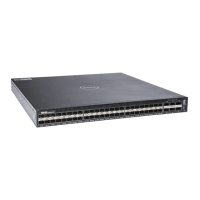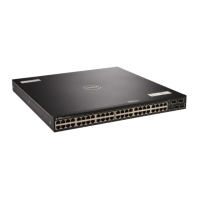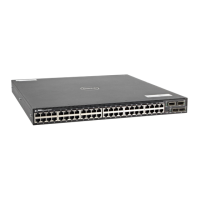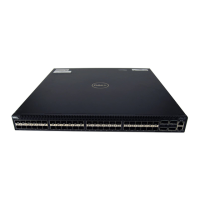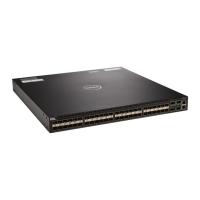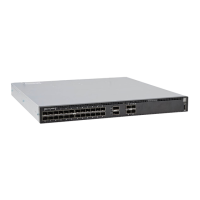If the source TCP/UDP port or source IP address does not match the management port IP address, a route
lookup is done in the default routing table.
EIS behavior for ICMP: ICMP packets do not have TCP/UDP ports. In this case, to perform an EIS route
lookup for ICMP-based applications (ping and traceroute), you must configure ICMP as a management
application. If the management port is down or the route lookup fails, packets are dropped.
If source IP address does not match the management port IP address route lookup is done in the default
routing table.
Default Behavior: Route lookup is done in the default routing table and appropriate egress port is selected.
Table 39. Behavior of Various Applications for Switch-Destined Traffic
Protocol Behavior when EIS is Enabled Behavior when EIS is Disabled
ftp EIS Behavior Default Behavior
http EIS Behavior Default Behavior
ssh EIS Behavior Default Behavior
Snmp (snmp mib response) EIS Behavior Default Behavior
telnet EIS Behavior Default Behavior
icmp (ping and traceroute) EIS Behavior for ICMP Default Behavior
Interworking of EIS With Various Applications
Stacking
• The management EIS is enabled on the master and the standby unit.
• Because traffic can be initiated from the Master unit only, the preference to management EIS table for
switch-initiated traffic and all its related ARP processing is done in the Master unit only.
• ARP-related processing for switch-destined traffic is done by both master and standby units.
VLT
VLT feature is for the front-end port only. Because this feature is specific to the management port, this
feature can coexist with VLT and nothing specific needs to be done in this feature to handle VLT scenario.
DHCP
• If DHCP Client is enabled on the management port, a management default route is installed to the
switch.
• If management EIS is enabled, this default route is added to the management EIS routing table and the
default routing table.
Internet Group Management Protocol (IGMP) 449
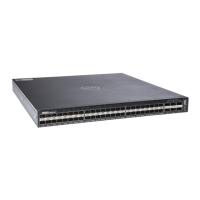
